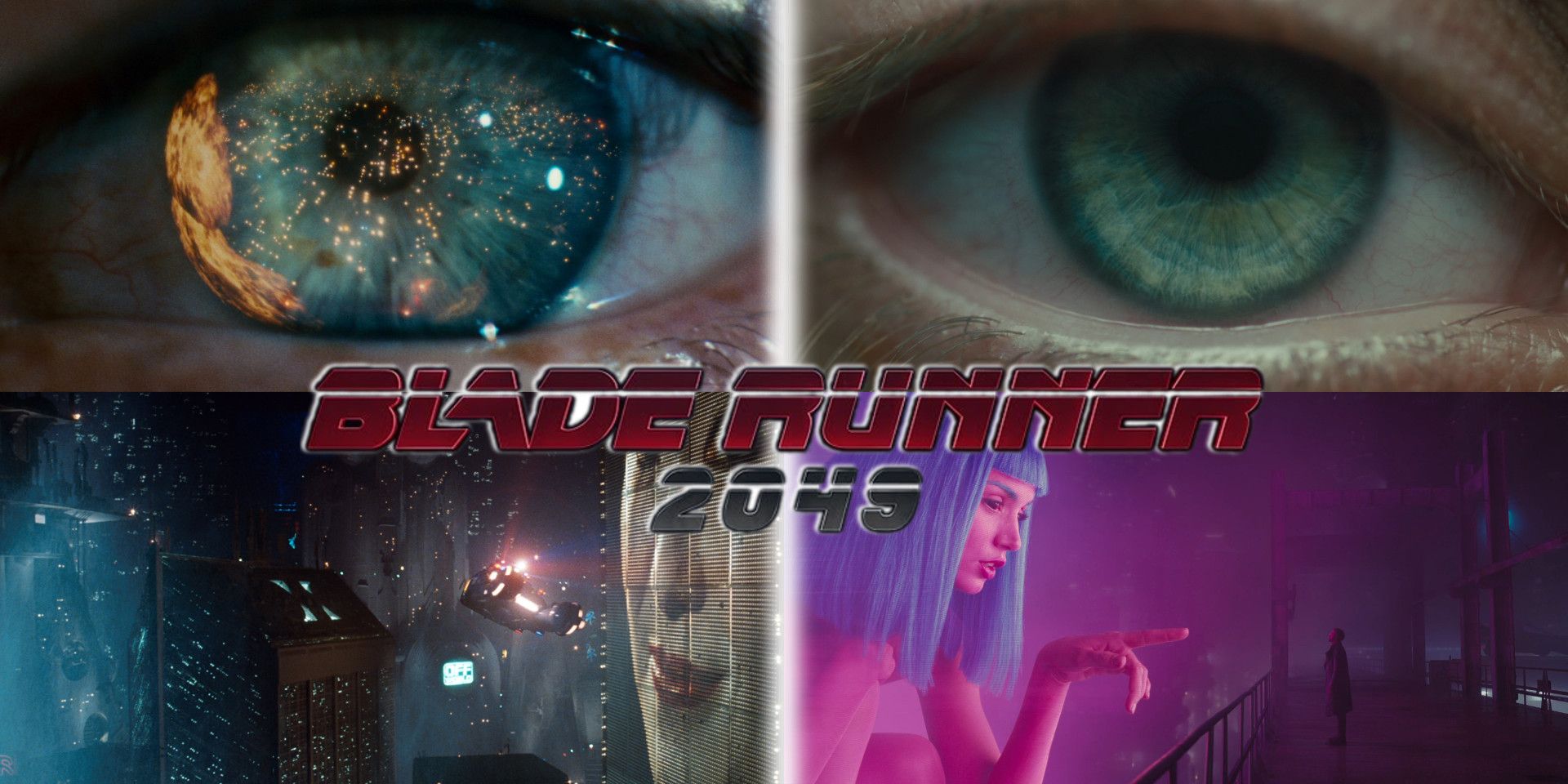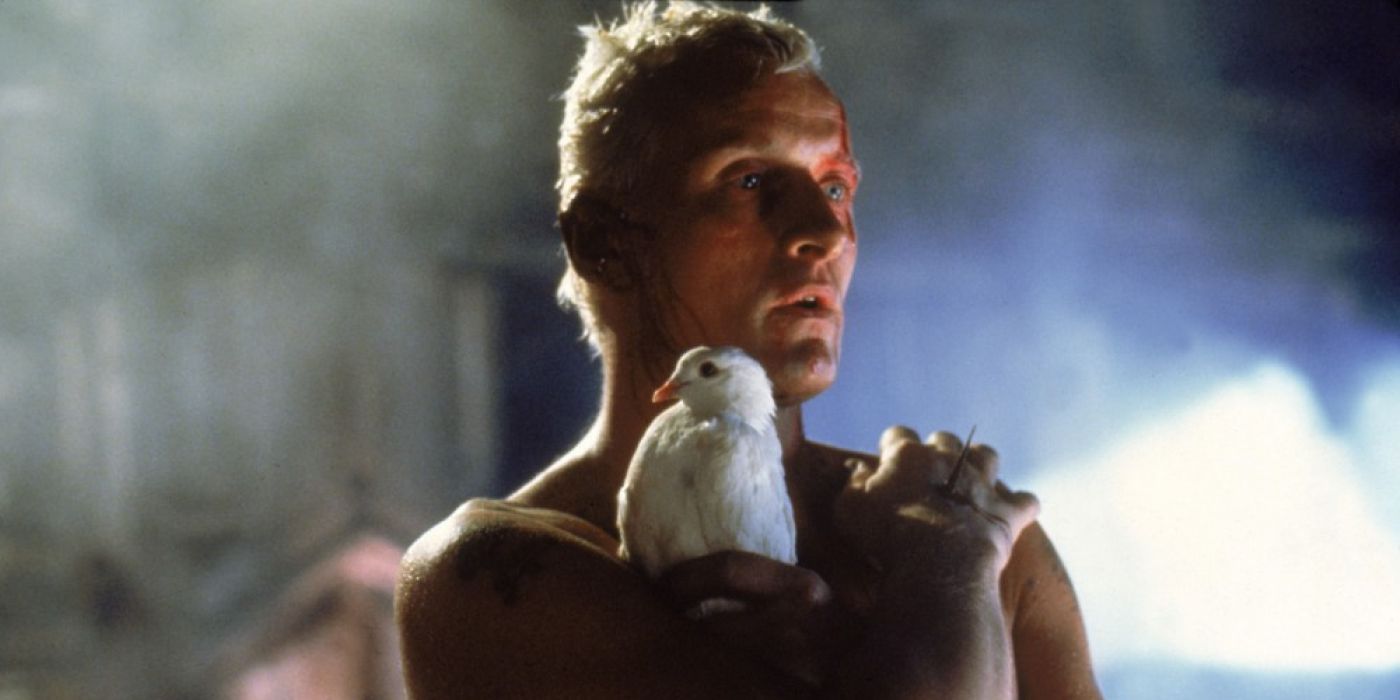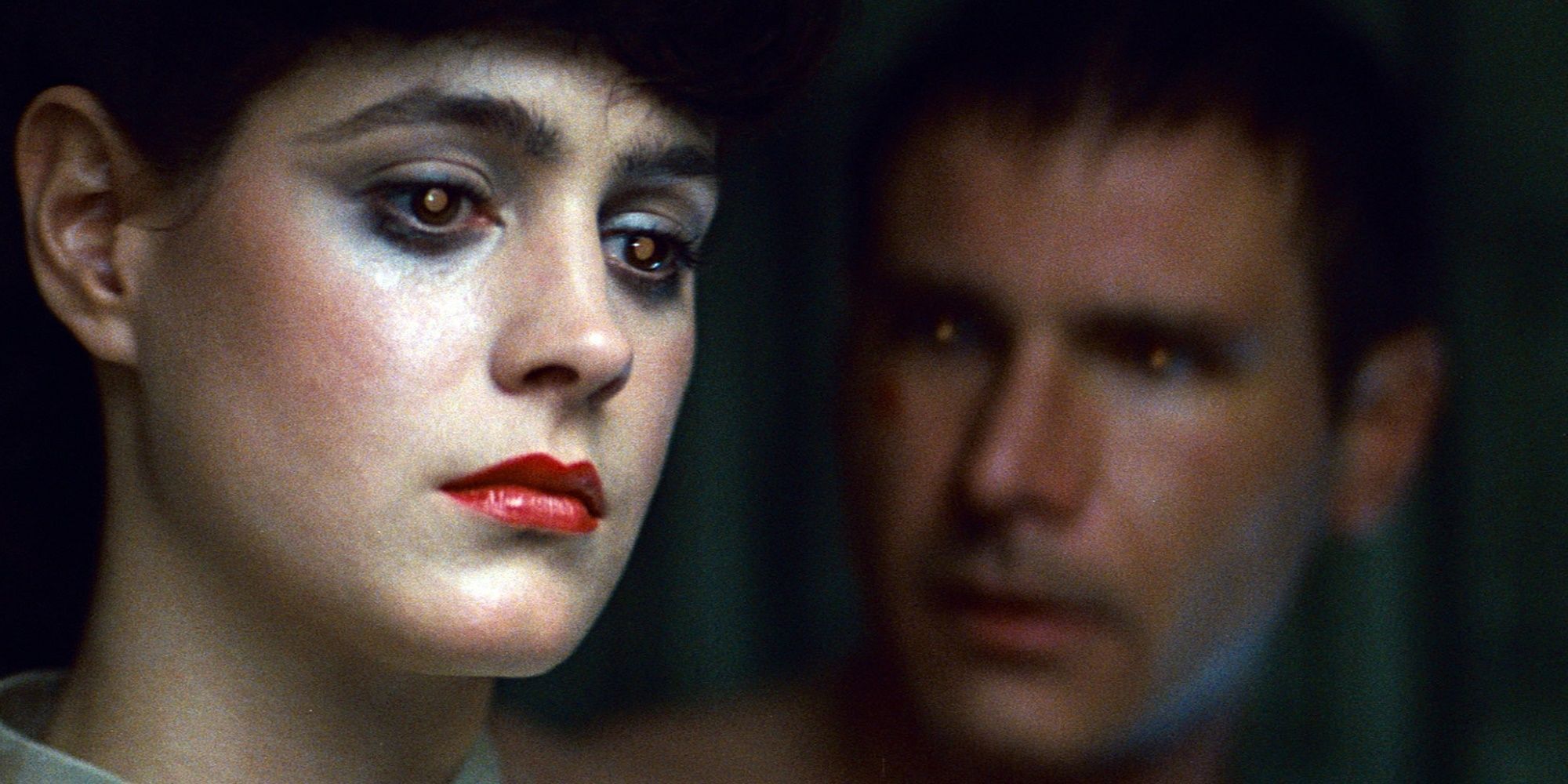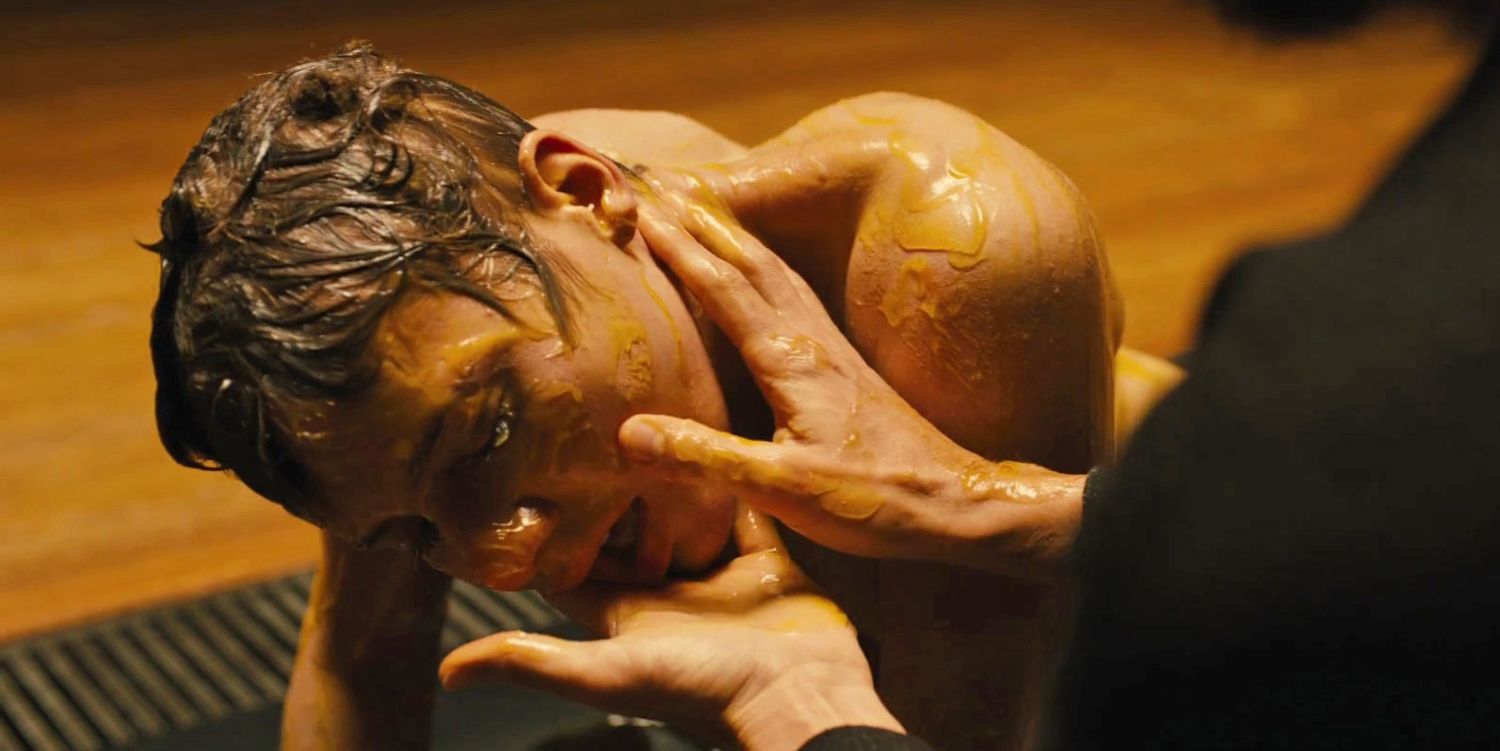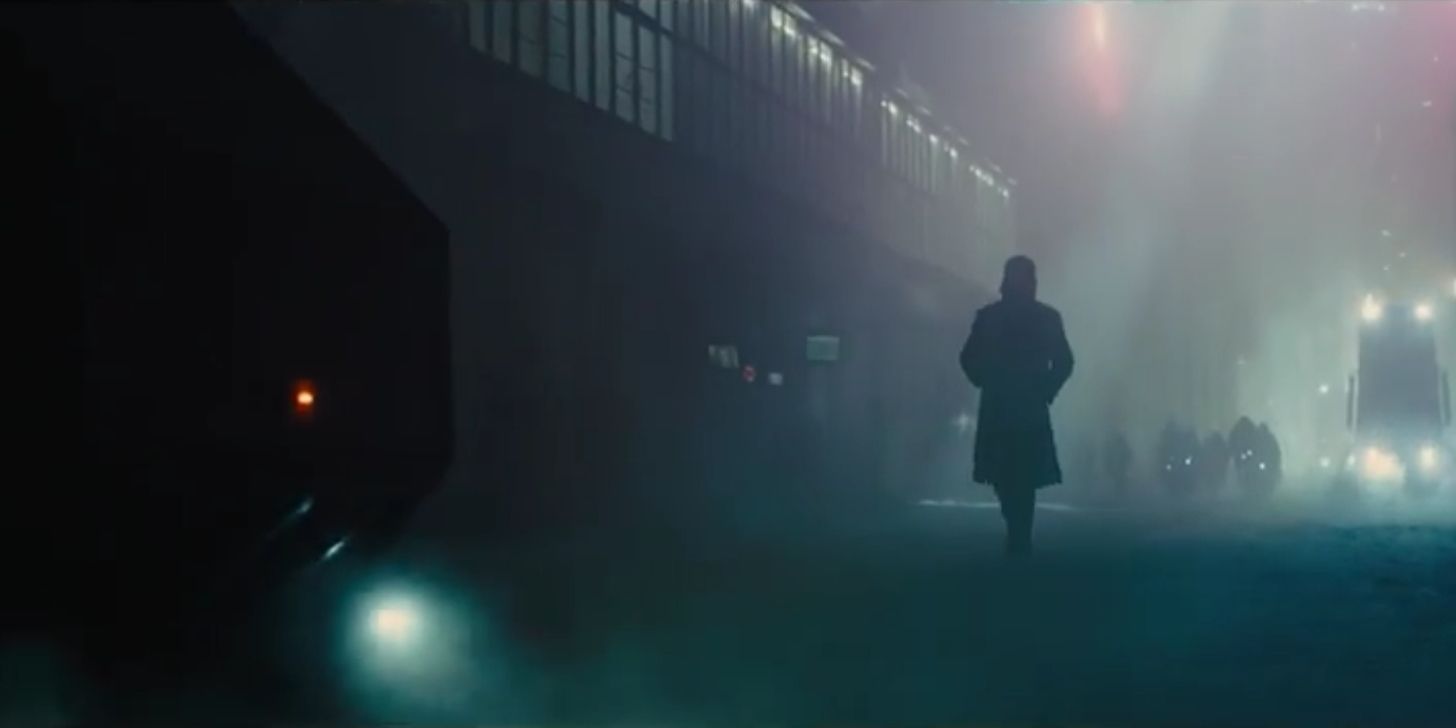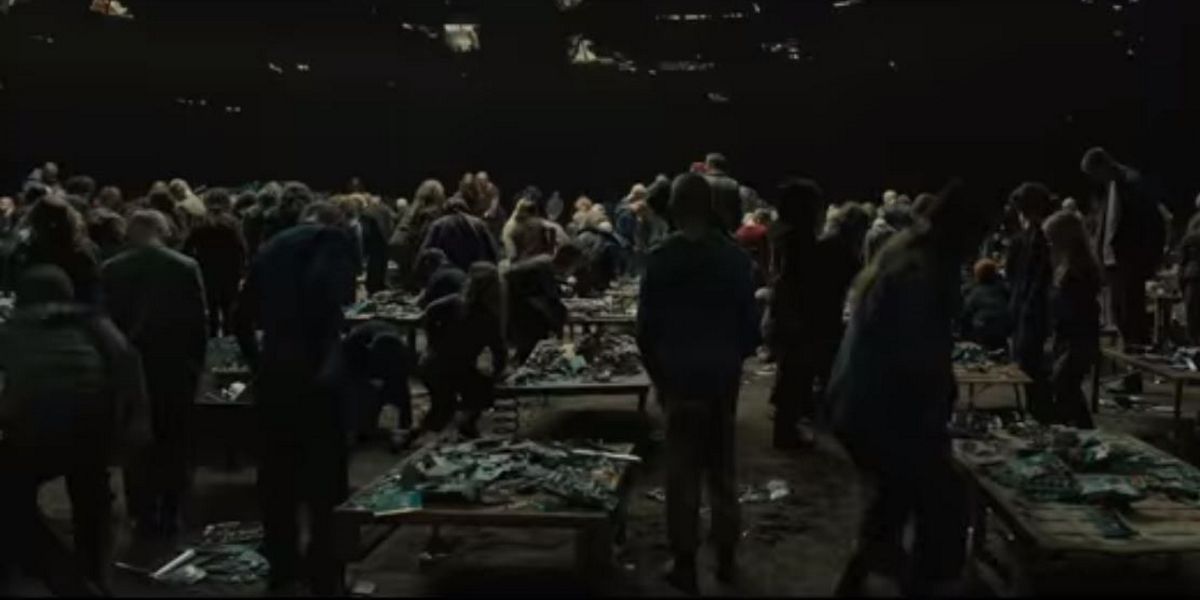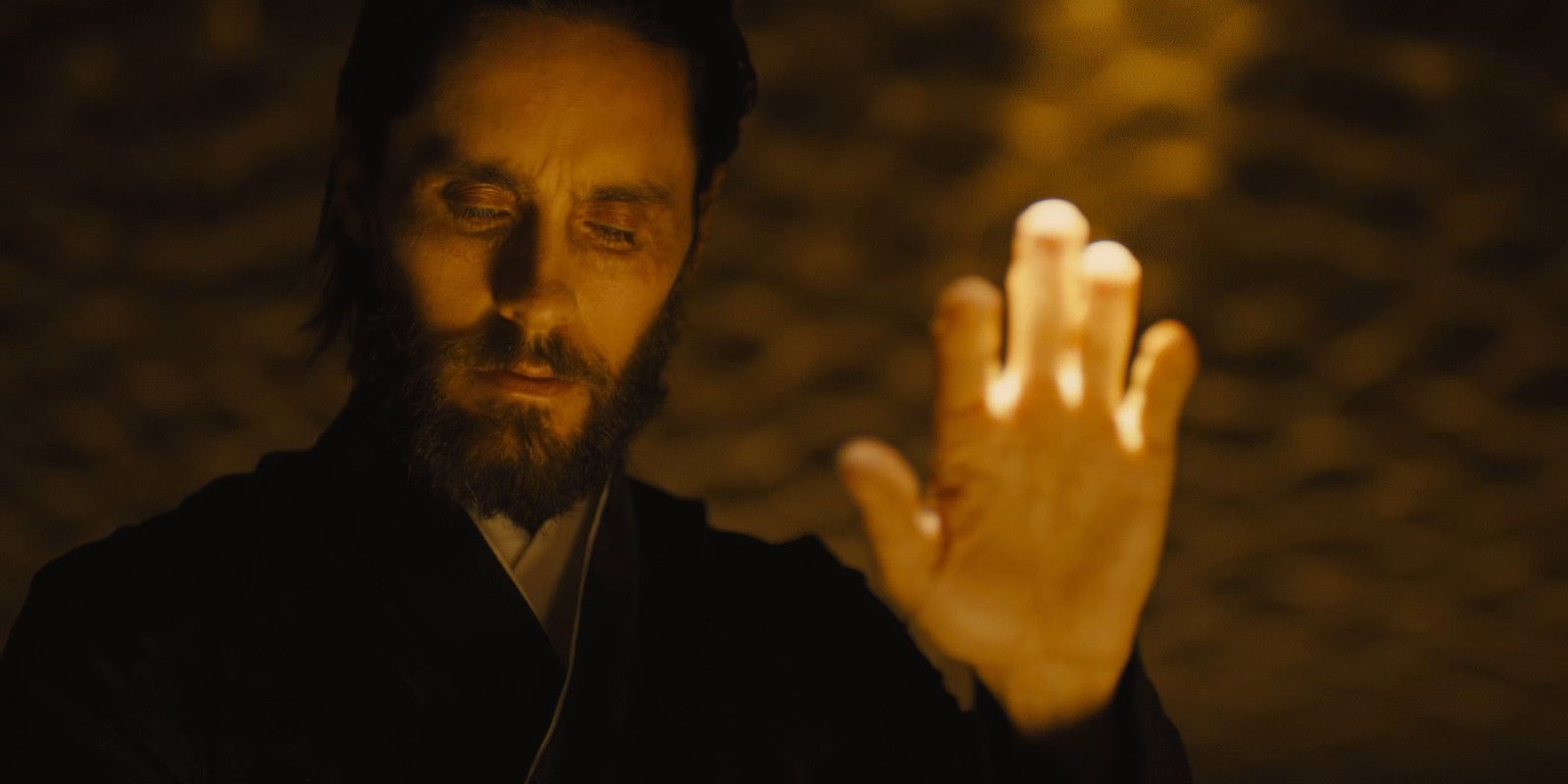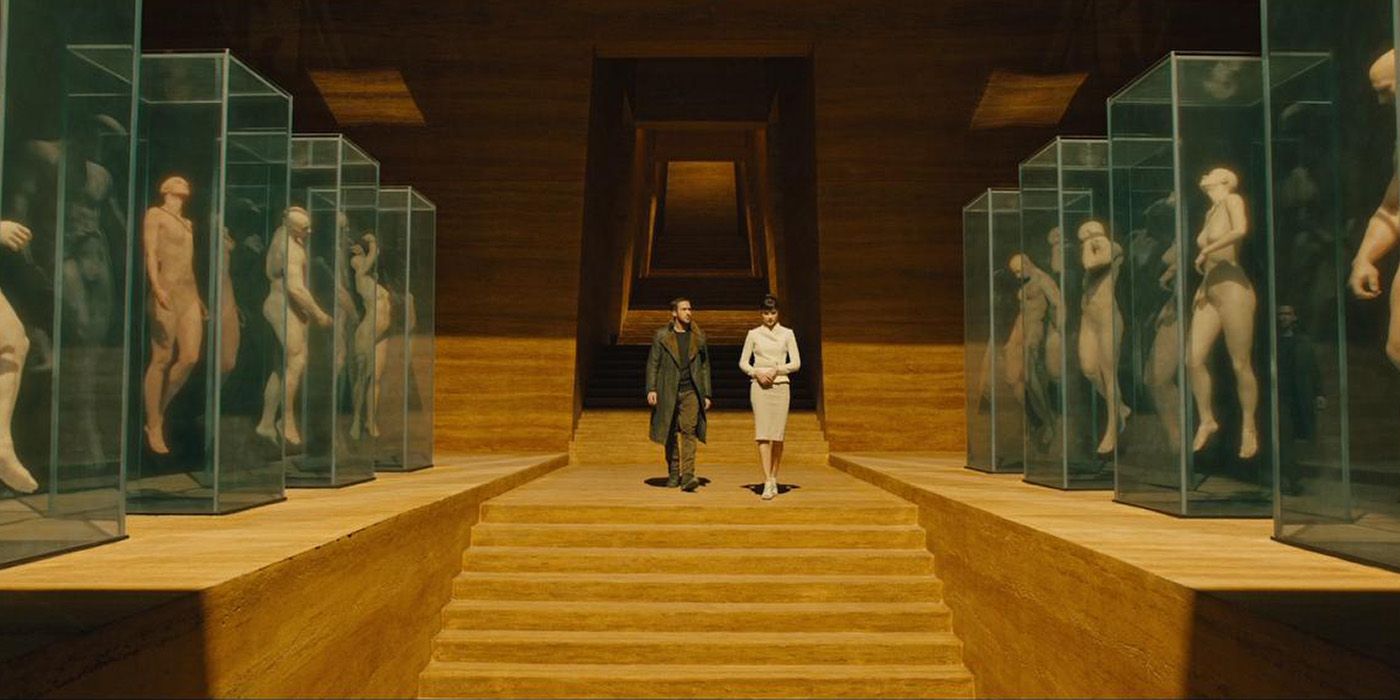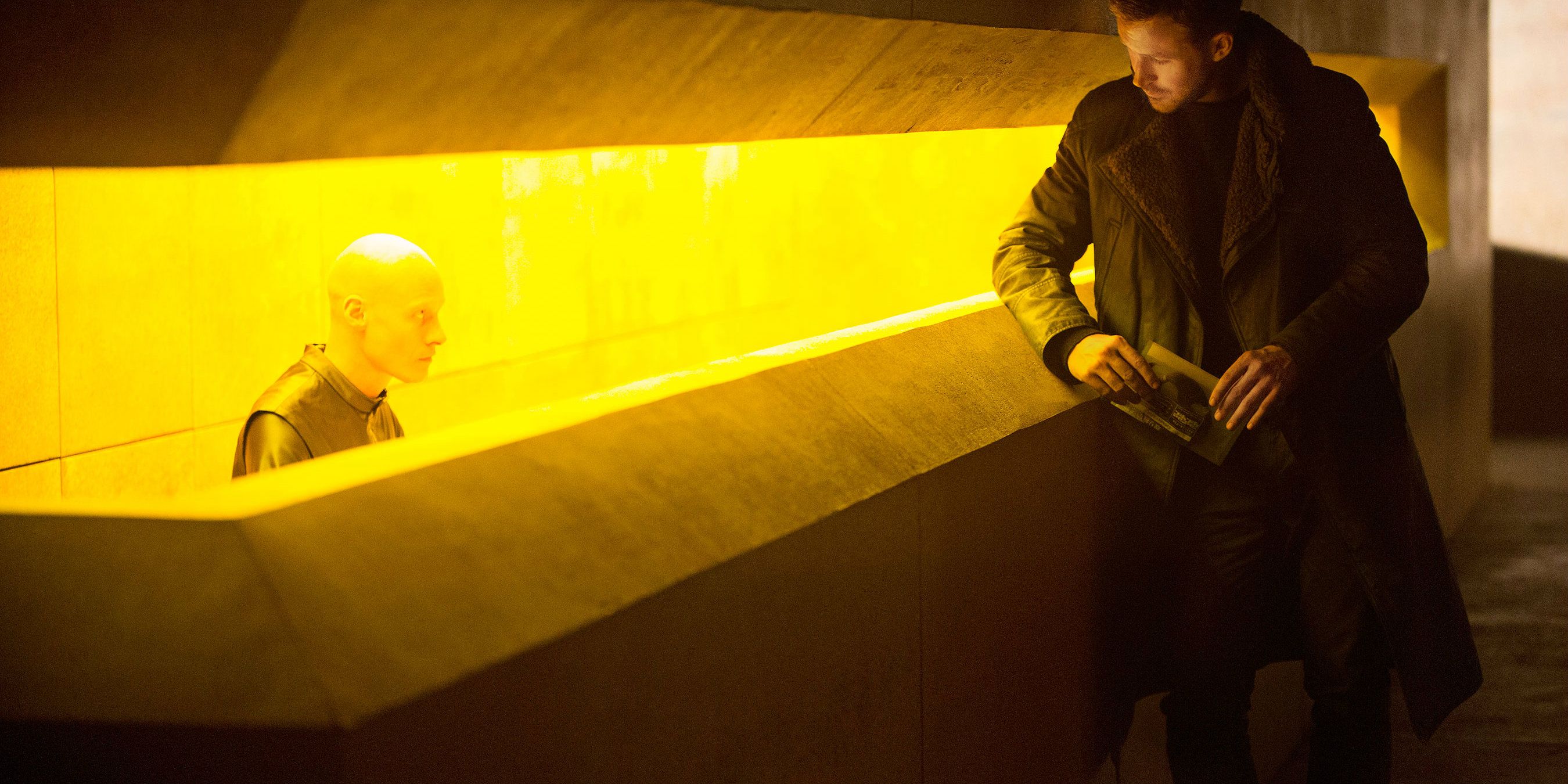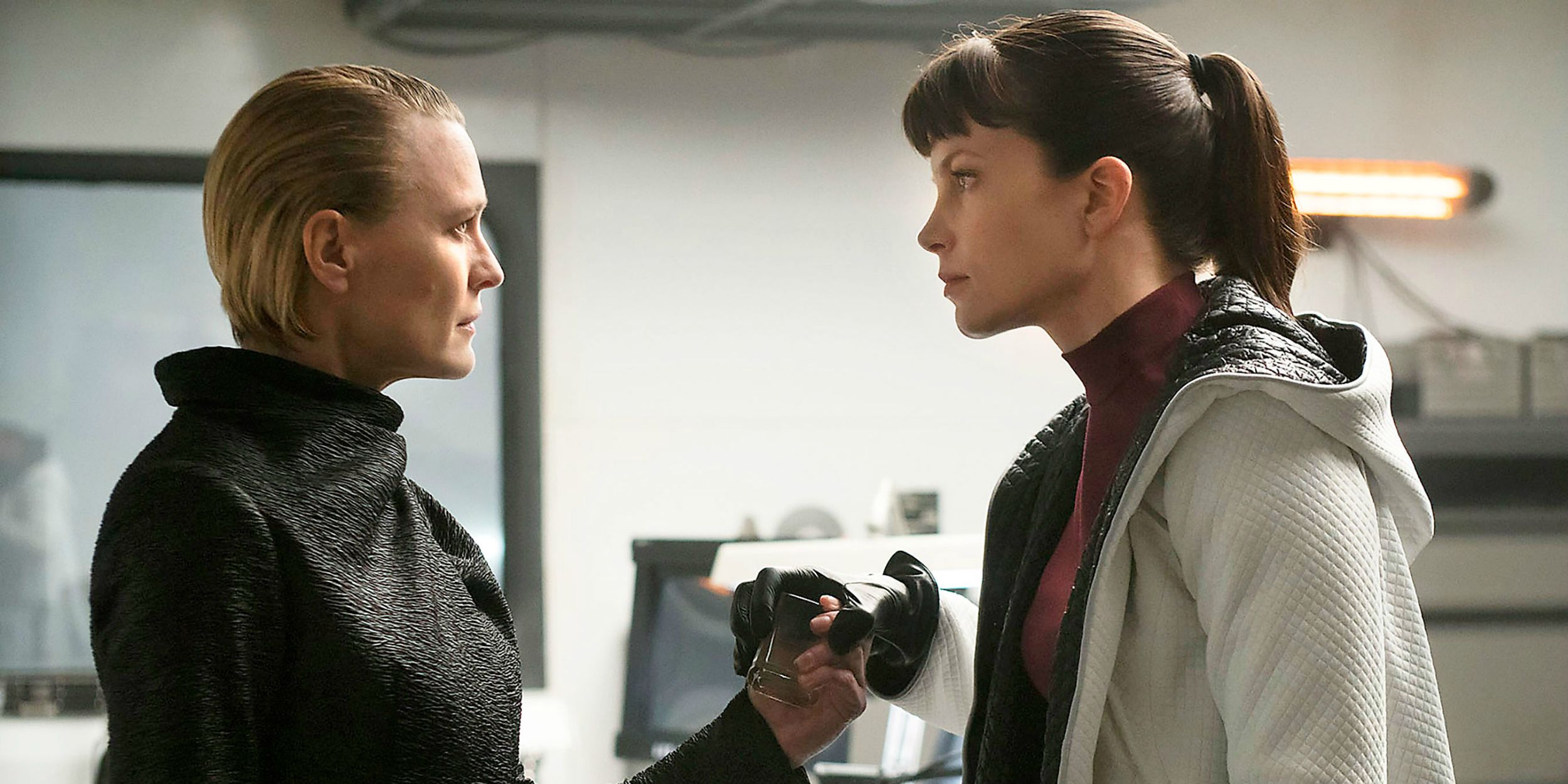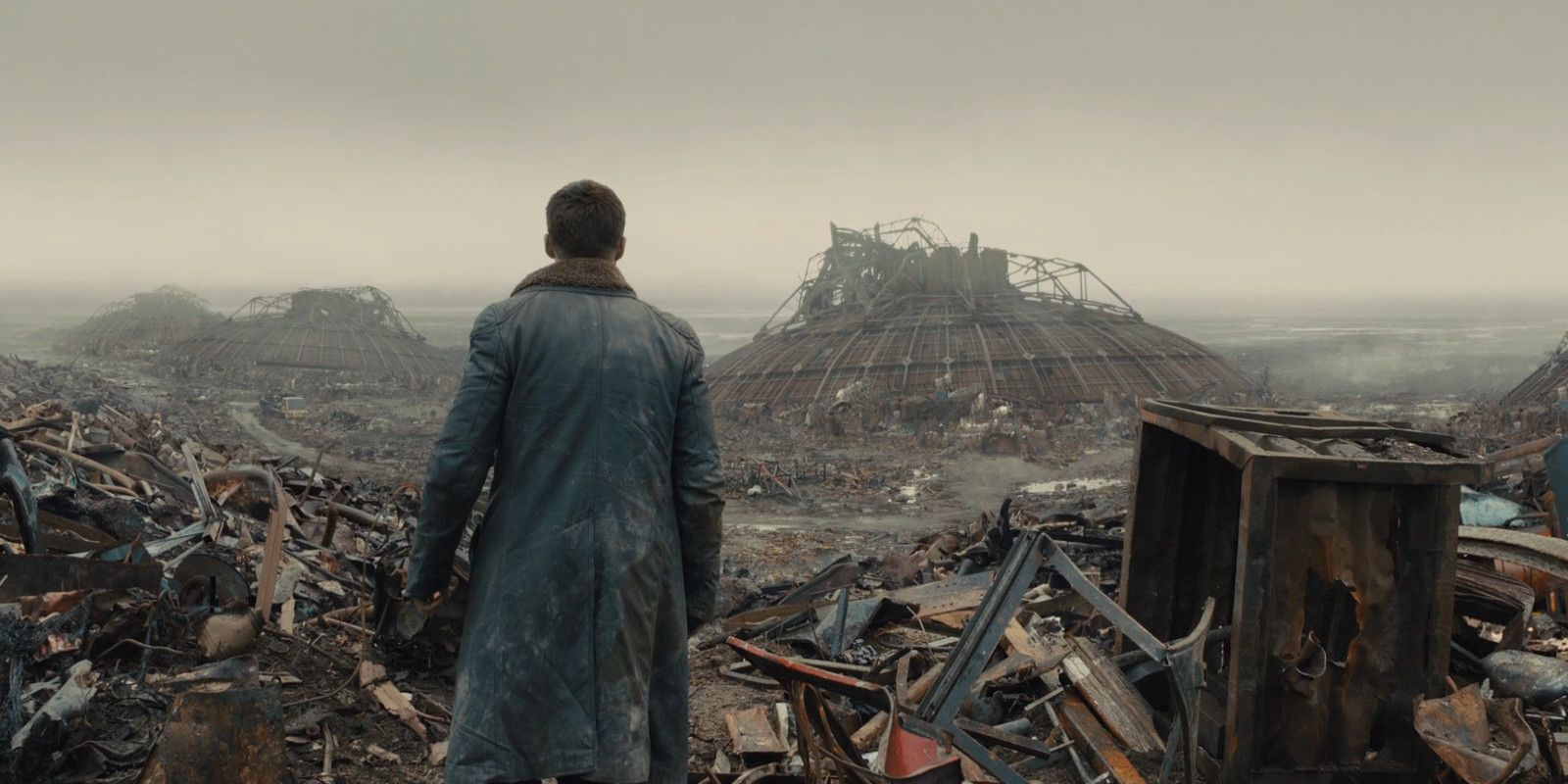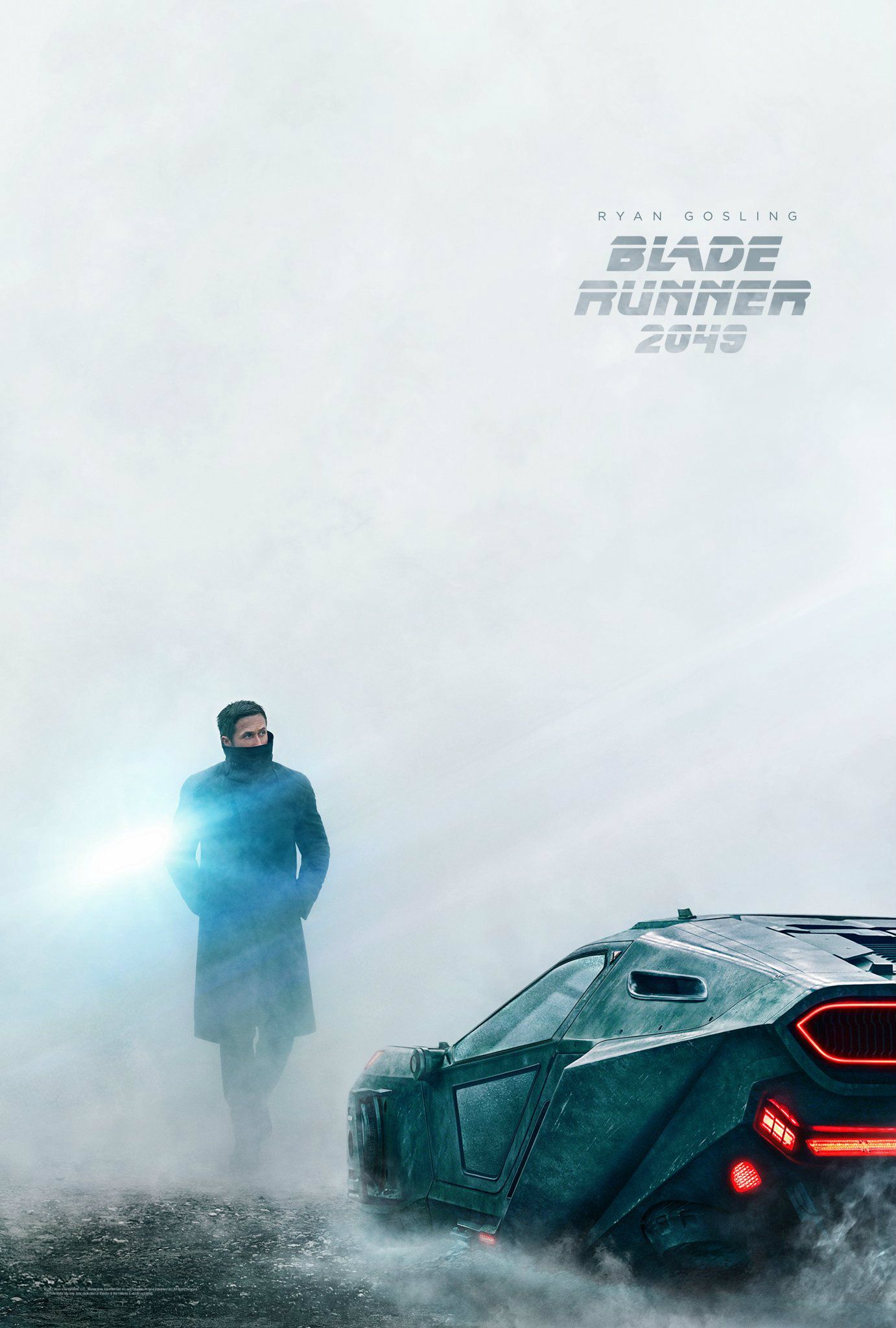Warning: may contain SPOILERS for Blade Runner and Blade Runner 2049.-Ridley Scott's vision of the future always seemed pretty bleak. One of his most renowned films, Blade Runner, envisions Philip K. Dick's dark, dystopian world to near-perfection. Recently, Denis Villeneuve undertook the daunting task of resurrecting Scott's seminal series with Blade Runner 2049. Fans of the haunting, cyberpunk classic aren't sure what to expect, but his follow-up has great potential, especially with Harrison Ford reprising his role as Rick Deckard and a top-notch cast, including the acting muscle of Ryan Gosling, Robin Wright, and Jared Leto among others.Warner Bros. dropped the third trailer at San Diego Comic-Con. While showing off Villeneuve's work on the film (which looks stunning), the latest clip also reveals more about the mysterious plot, which purports to tie up loose threads from Scott's original. In addition to the trailer, Warner released a rundown of the timeline (h/t Collider) at Comic-Con, which illuminates key historical points in the film's not-too- distant- future. So, how did the world of Blade Runner find itself in such a sorrowful state?
This Page: Tears in Rain
œTears in Rain
The first Blade Runner begins with a neo-noir flourish, as audiences are treated to long, sweeping shots of Los Angeles in the distant year of 2019. But after dropping to the street, the vast, techno-wonderland rapidly reveals LA as a grimy and dangerous place. And rainy. It's always raining there. Fans quickly meet Rick Deckard, who once worked as a blade runner, tracking down rogue replicants (i.e. synthetic human beings). Now retired, his former boss at the LAPD pushes him back into the game to track down a band of dangerous androids.
During his assignment, Deckard falls for a replicant named Rachel (Sean Young). He also discovers that the rogue synthetic's murderous mission is a personal one. They're on a quest to find their creator, corporate overlord Eldon Tyrell, and force him to upgrade their four-year lifespan. Deckard's task becomes a rumination on the ugliness humanity often heaps upon itself and its creations. He also discovers the dividing line between human being and replicant is far from static.
Scott's now-legendary director's cut climaxes with a poetic scene, as Deckard confronts the Roy Batty (Rutger Hauer) as his pre-programmed life cycle ends. The haunting finale leaves behind an enduring mystery, one which still conjures up heated debate ’ at least if you keep Ridley Scott out of it. Almost 40 years later, these unanswered questions resurface. As the trailers seem to indicate, Deckard and his actions set in motion events that changed the course of history.
So what exactly went wrong with the world? The SDCC timeline offers a few telling hints:
Rick Deckard and Rachel Escape (2019)
After Roy Batty's moving self-eulogy, Deckard is confronted with additional hiccups to his would-be happy ending. His cop colleague, Gaff (Edward James Olmos), warns him about his android love, Rachel, who may suffer the same fate as Batty. When Deckard returns home, he discovers one of Gaff's origami unicorns, meant to symbolize either her unique nature as a replicant among humans... or Deckard's own true synthetic nature (in theory, since Deckard dreamt about a unicorn earlier, Gaff's predisposed knowledge of his dream is proof of Rick's replicant status)?
Debate aside, his colleague allows him to escape with Rachel, and the final shot consists of them leaving the apartment, although the theatrical ending features them flying to a lush field. In the Blade Runner 2049 trailers, though, Deckard appears to live alone, which doesn't bode well for Rachel. Either other blade runners tracked them down at some point, or she did have a built-in shelf life. Hopefully, the sequel will address Rachel's fate, as well as Deckard's in-between years. While the SDCC panel didn't shed any light on her fate or Deckard's true nature, fans were allowed a curious peek at what happens between the films.
The Nexus 8 Arrives (2020)
When Roy Batty, a Nexus 6 himself, killed Eldon Tyrell during Blade Runner's climax, he certainly didn't destroy the company. As the SDCC timeline notes, the megalithic corporation released the next artificial human, the Nexus 8, barely a year after their founder's death. The latest group is also intended for use in the off-world colonies where Batty and his cohorts first rebelled. This time, there's no way the replicants could rebel against their masters, kill a shuttle crew, and fly to Earth... In any case, Tyrell seeks to avoid the whole existential quest with a side of murder by granting this batch unlimited life spans.
Nexus 8s also feature œocular implants that make them easy to identify. In the original film, blade runners identified Nexus 6 models by asking them roughly 30 questions, using the Voight-Kampff test. The test indicated, using pupil dilation and other autonomic responses, whether the subject was an artificial human or not. Yet an advanced model like Rachel was able to fool the test for well over 100 questions. This time around, Tyrell Corp also wants to make it very easy to identify Nexus 8s... just in case.
œThe Blackout (2022)
In 2022, an unknown group of individuals detonates an electromagnetic pulse (EMP) somewhere on the West Coast of America. As a result, the world, mostly run by computers now, crashes. The pulse deletes or damages untold amounts of data and knocks out most of the planet's financial institutions and industries.
In the aftermath, food supplies (likely grown via electronic industry at this point) dwindle to a dangerously low level. No one is ever caught or takes responsibility for the blackout, and conspiratorial talk runs rampant. After Batty and his Nexus 6 cohorts dispatched an entire shuttle crew and murdered a number of others, replicant PR isn't looking too hot. As a result, a terrified and desolate populace turns any and all synthetic beings into scapegoats.
Although the timeline doesn't elaborate upon it, humans and their replicants may have engaged in additional skirmishes due to mounting tensions. No matter what happened, the end result is a push to outlaw artificial life.
Replicant Prohibition (2023)
In 2023, bad blood between humans and replicants pushed lawmakers to crack down on replicants. As a result, every synthetic being, including the Nexus 8 series, is forced to retire. By this point, Nexus 6 units have already gone out of service, due to their 4-year lifespan, so only those Nexus 8 models that fled the ban remain on the hunted list.
Despite the purge, some late-model replicants clearly escaped their enforced demises otherwise, the blade runners of 2049 wouldn't have much to work with. The ragtag band, seen tucked away in (presumably) the ruins during the third trailer, could be the survivors of prohibition. It's also possible K and Wallace are both after Deckard to dig up the refugees. K's search for Dave Bautista's very strong human (or replicant) character could also be an important link between the Nexus 8 fugitives, Deckard, or both.
The Wallace Corporations Solves the Food Shortage (2025)
In the aftermath of the EMP and global collapse, dramatic food shortages and fearful, humans sought salvation. A starving populace turned to wunderkind researcher Neander Wallace to solve the Earth's problems. Using his genetic engineering techniques, he tweaked crops for optimal growth and later shared his patents with the world. Poof! No more hunger pangs. Of course, his success came with an added bonus: Wallace Corporation experienced a massive, rapid growth, stretching its tendrils around the globe and even getting a foothold in the off-world colonies.
For all his good work feeding the populace, Wallace can only do so much. In the first trailer, Villeneuve and cinematographer Roger Deakins treated viewers to a barren, orange-drenched landscape. Thus far, Villeneuve and crew haven't revealed the reason for the planet's perpetual blanket. But the new timeline could suggest the haze resulted from the EMP or the societal collapse which followed it. Perhaps poisons leached into the landscape from unsustainable farming practices or even failed nuclear reactors. Clearly, the barren landscape pushed Wallace to reinvent the replicant wheel.
Wallace Corp Buys Tyrell Corporation (2028)
Solving the food shortage turned out very well for Neander Wallace and his company, which blossomed into a trans-terrestrial conglomerate. Three years later, they purchased the now-defunct Tyrell Corp, as well as all its secrets about manufacturing synthetic life. Now, several trailers deep, it appears more and more that Wallace and his unique vision to recreate civilization is the driving force behind the most dramatic changes after the first Blade Runner.
Wallace's key takeaway here, which echoes throughout the trailers, is an insistence that "every civilization was built off the back of a disposable workforce." Genetically modified food is clearly just the beginning. Apparently, he aims to rebuild the tatters of the world into his own personal empire, and tampering with the very structure of life is his means to an end. At least he appears to practice what he preaches, since clips of the would-be megalomaniac suggest he's heavily modified, either through genetic or cybernetic manipulation. Wallace and his unsettling vision for the future form the crux of K's early mission and may result in his eventual change of perspective a la Deckard.
Replicant Prohibition Ends (2036)
During the 2030s, the Wallace Corporation modified the replicant design, improving the previously flawed memory implants. They also tricked out synthetic beings to make them more subservient to humanity. As a result, the government repeals the ban on artificial life, also likely at the behest of Wallace Corps and their colossal bankroll. Shortly thereafter, the massive conglomerate releases the latest wave of synthetics, the Nexus 9.
If the trailers are any indication, the latest model isn't behaving quite right either. Earth also appears to split down the middle at this juncture, between humans (the relative haves) and replicants (the have nots). Despite Wallace Corp's market domination and their drive to build a better servant, the process remains, without a doubt, flawed. Although unclear, the Nexus 9 models may rebel, causing Wallace to further tweak his design.
It's also possible he has other plans for the artificial life forms. In the trailer, he charges K with tracking down (presumably) Rick Deckard. Whatever secrets he holds seem vital to Wallace's drive for prolific, œperfect, or subservient synthetic life. Of course, if Wallace himself is enhanced or modified by implants, his designs may actually favor synthetics over than humans much like the Borg from Star Trek, who aspired to mechanical perfection.
If Deckard is the key to this mystery, it further suggests that he's a replicant. At the same time, the trailers also allude to him erasing evidence, so the uncertain fate of prototype, Rachel, may actually be the key Wallace's grand designs.
Blade Runner Force Increased (2040s)
Repealing Replicant Prohibition ostensibly lead to some serious repercussions. During the 2040s, the Los Angeles Police Department beefed up their blade runner squad. According to the timeline, a larger force is necessary to deal with a surge in illegal replicants. Growing concern over fugitive synthetics also implies an uptick in fear among humans, serious malfunctions with the Nexus 9 series, or concerns over an escalating synthetic-human class war.
During this time, K probably signs up with the LAPD, training for the mission he'll undertake in Blade Runner 2049. Ramping up their forces, especially those tasked with weeding out and eliminating dangerous replicants, implies deteriorating conditions on Earth. One clip from the trailer shows off a room full of apparent refugees or possibly even fugitive Nexus 8 or 9 models hiding since prohibition. Although the trailer is somewhat aloof by design, Deckard, Rachel, and perhaps Bautista's character, represent the missing link between K's mission and Wallace's dreams of a new world.
By the 2040s, though, Wallace Corp's plans have escalated and the world is on the brink of war or worse.
The World in Crisis Again? (2049)
As Collider's timeline notes, the rising action in Blade Runner 2049 begins at the cusp of ecological collapse:
œWhen we return to Los Angeles, 30 years after the original movie, climate change has caused the sea level to rise dramatically. A massive Sea Wall has been built along the Sepulveda Pass to protect the Los Angeles basin. Los Aneles [sic] is even more uninhabitable than before and filled with poverty and sickness. Humans who were not well enough to leave for the off-world colonies are left behind. There is no fresh food, and inhabitants survive on Wallace's genetically modified food products sold from vending machines at street markets.
By 2049, society has erected two significant walls, a physical one, and a metaphorical one. To contend with global climate change, Los Angeles constructs the so-called "Sea Wall" to contains the rising waters. The second wall, which Robin Wright's character alludes in the trailer ("The world is built on a wall that separates kind. Tell either side there's no wall, you bought a war."), refers to the escalating replicant-human conflict. While neither wall will be easy to maintain, the latter clearly informs the conflict in Blade Runner 2049, while the former is responsible for painting the vivid, devastated landscape that frames the film.
Between the timeline and the trailers, Villeneuve and his team have constructed a gorgeously rendered shot of humanity at its worst. In the film, Neander Wallace saved humanity by forcing their dependency on his brand of machine-vended GMO meals. On top of that, anyone with the capital or connections has escaped the razed planet, leaving their compatriots to deal with oppressed replicants, as well as a decaying world.
During the film, Wallace clearly has major designs for both humans and synthetic life. At one point, Wright's character implores K to find Deckard, clearly afraid that his secret will œbreak the world. Whatever information Deckard, and perhaps K himself, have access to, could save or destroy the remnants of life on Earth.
”
In four short months, Blade Runner 2049 debuts and (hopefully) every nagging question from the past 30 years will bubble to the surface. The Comic-Con timeline, however, sets audiences up with a fantastic mystery, as well as a bleak yet somewhat hopeful vision of the future. It also paints a better picture of the central conflicts of the sequel, which feel genuine to Ridley Scott's original universe.
Despite their revealing moments, both the trailers and timeline dangle many curious carrots over the film. With complex heroes and villains, as well as a stunning futuristic landscape, Blade Runner 2049 appears to construct a compelling world, one which is consistent with its predecessor and adds new layers to the classic tale.
Next: Blade Runner 2049 Director Says Secrecy Is Insane'
Source: Collider

